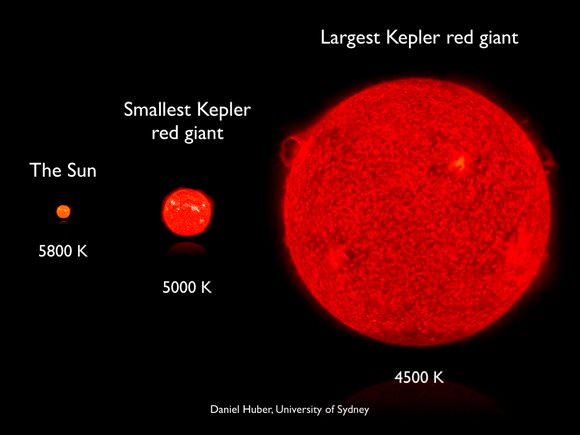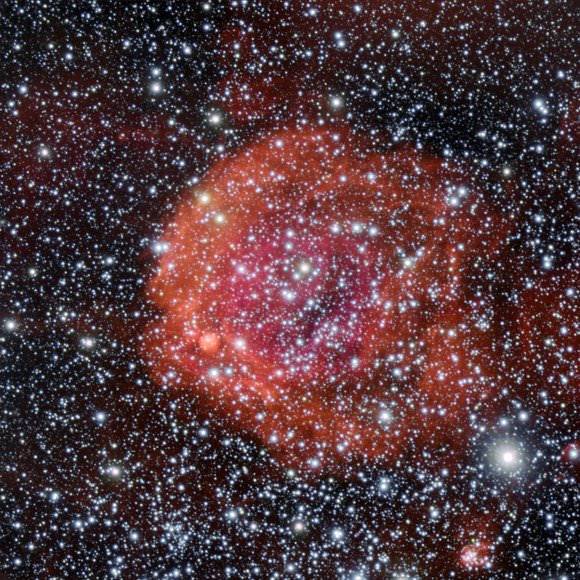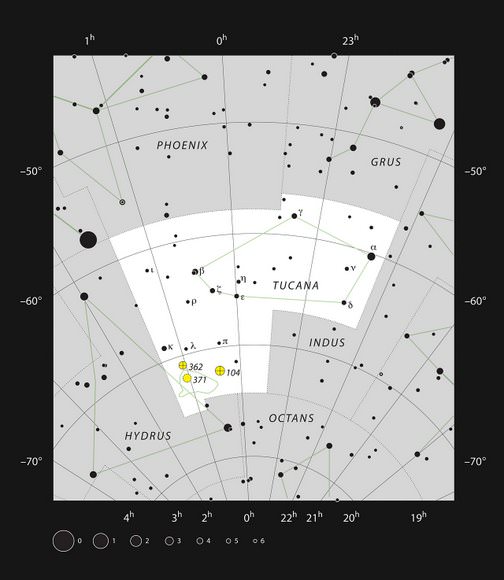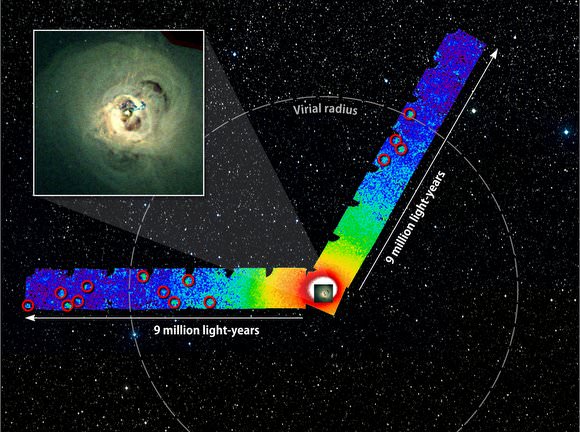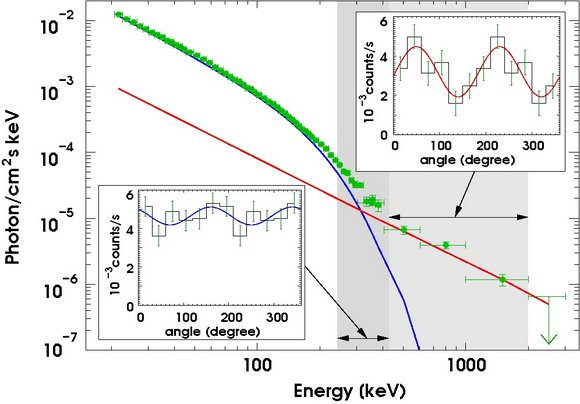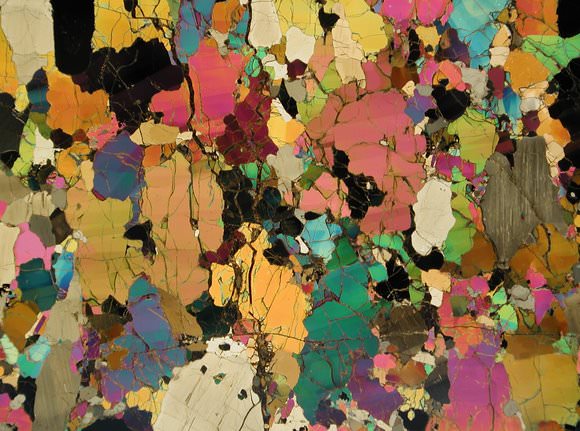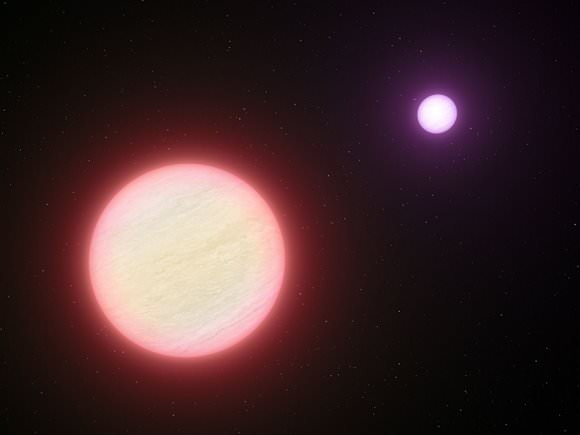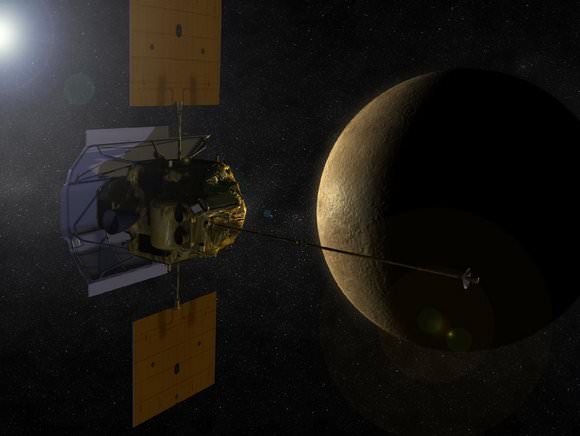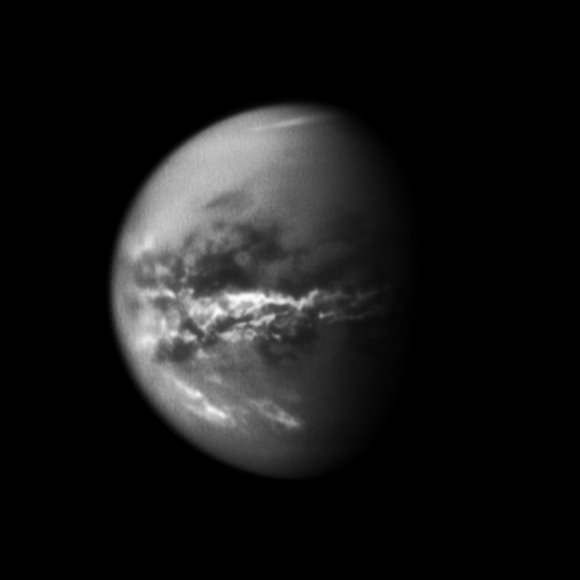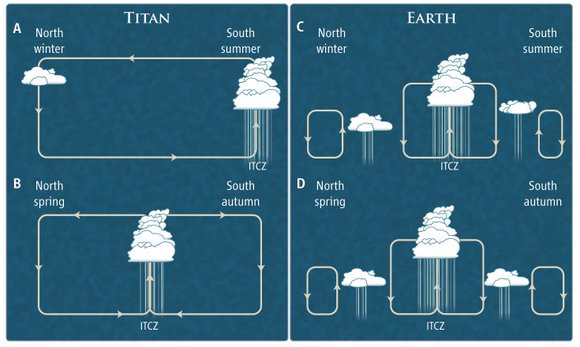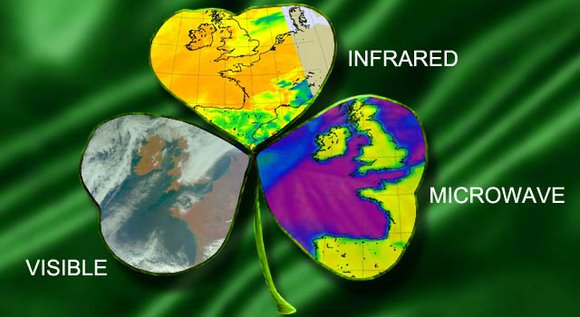[/caption]
Planetary rings are more than just astronomical marvels — they’re also a sort of archive, chronicling histories of impacts for decades.
A pair of studies were published online in Science today by two different teams that noticed odd characteristics in the rings of Saturn and Jupiter — and followed them to this promising conclusion. In the first, lead author Mark Showalter of the SETI Institute in Mountain View, Calif. and his team analyzed images of Jupiter’s rings observed in 1996 and 2000 by Galileo, and again in 2007 by Horizon, zeroing in on a pattern they labeled “corrugated,” like a tin roof. Around the same time, Matthew Hedman, from Cornell University in Ithaca, NY and his colleagues discovered similar ripple patterns in the rings of Saturn, from images taken by the Cassini spacecraft.
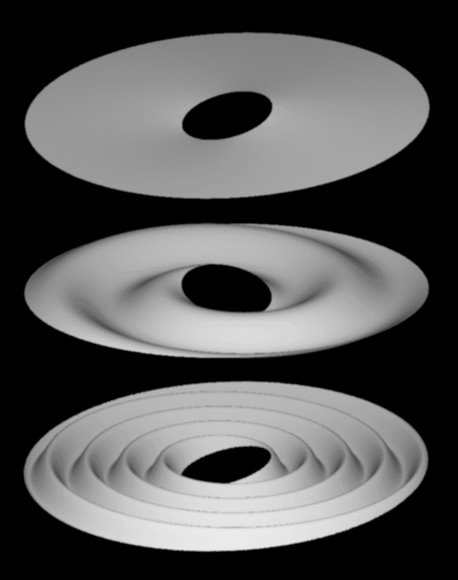
The images above show how a vertical corrugation can be produced from an initially inclined ring. The top image shows a simple inclined ring (the central planet is omitted for clarity), while the lower two images show the same ring at two later times, where the ring particles’ wobbling orbits have sheared this inclined sheet into an increasingly tightly-wound spiral corrugation.
Carolyn Porco, a co-author on the Hedman-led study and director of the Cassini Imaging Central Laboratory for Operatons (CICLOPS), wrote in an email accompanying the release of the studies that “it has been known for some time that the solar system is filled with debris: small rocky bits in the inner solar system and icy bits in the
outer solar system that routinely rain down on the planets and their rings and moons. A couple hundred tons of such debris hits the Earth alone every day. Well, the origins of the spiral ripples in both ring systems have now been pinpointed to very recent impacts between clouds of cometary fragments and the rings.”
Showalter’s team describes a pair of superimposed ripple patterns that showed up in Galileo images in 1996 and again in 2000.
“These patterns behave as two independent spirals, each winding up at a rate defined by Jupiter’s gravity field,” they write. “The dominant pattern originated between July and October 1994, when the entire ring was tilted by ~2 km. We associate this with the ShoemakerLevy 9 impacts of July 1994. New Horizons images still show this pattern 13 years later and suggest that subsequent events may also have tilted the ring.”
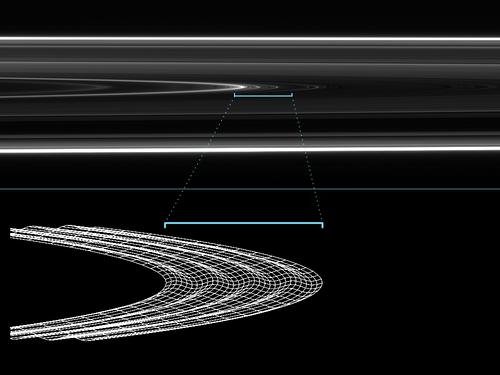
Hedman and his team note that rippling had previously been observed in Saturn’s D ring; NASA released the above graphic to explain the phenomenon in 2006. “The C-ring corrugation seems to have been similarly generated, and indeed it was probably created by the same ring-tilting event that produced the D-ring’s corrugation,” they write.
That paper also compares the rate of impacts likely to visit each planet: “… Saturn should encounter debris clouds derived from comets disrupted by previous planetary encounters at a rate that is roughly 0.2 percent of Jupiter’s impact rate.”
They reason that if Jupiter sees impacts from 1-km-wide objects as often as once a decade, “the clouds of orbiting debris created by the disruption of a 1-km-wide comet should rain down on Saturn’s rings once every 5,000-10,000 years. The probability that debris from a previously disrupted comet would hit Saturn’s rings in the last 30 years would then be between roughly 1 percent and 0.1 percent, which is not very small. Such scenarios therefore provide a reasonable explanation for the origin of the observed corrugation in Saturn’s C ring.”
Taken together, the papers show that Saturn’s ring ripples were likely generated by a comet collision in 1983, while Jupiter’s ring ripples occurred after the impact of a comet the summer of 1994 — specifically, the impact of Comet Shoemaker-Levy 9 that left scars on Jupiter still visible today.
Showalter and his coauthors point out that impacts by comets and/or their dust clouds are common occurrences in planetary rings.
“On at least three occasions over the last few decades, these collisions have carried sufficient momentum to tilt a ring of Jupiter or Saturn off its axis by an observable distance. Once such a tilt is established, it can persist for decades, with the passage of time recorded in its ever-tightening spiral,” they write. “Within these subtle patterns, planetary rings chronicle their own battered histories.”
Both papers appear today at the Science Express website. See also the CICLOPS site.


